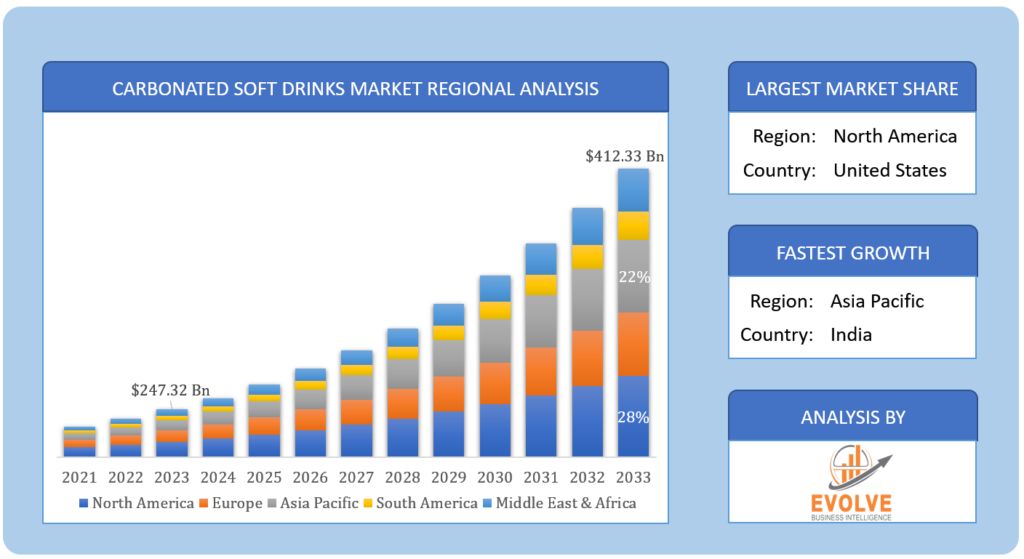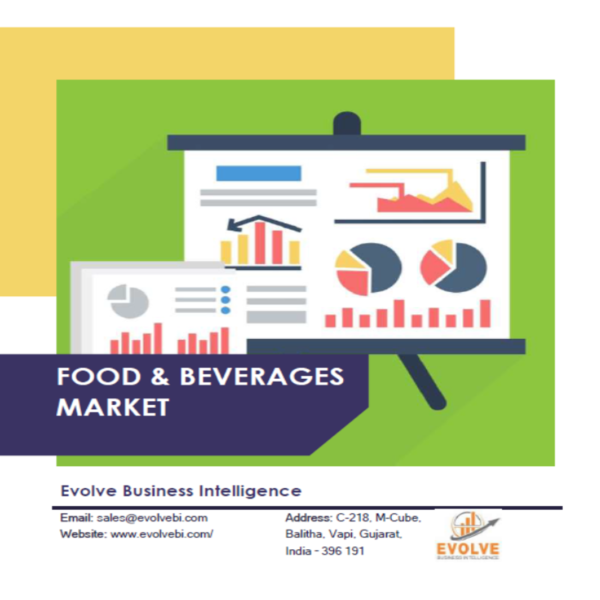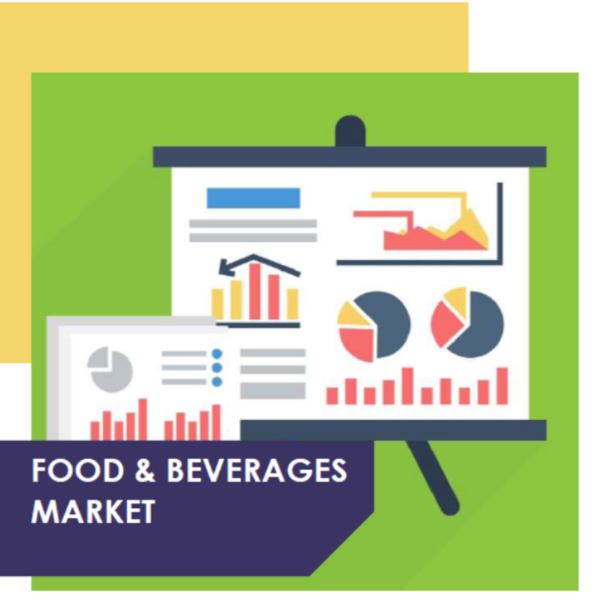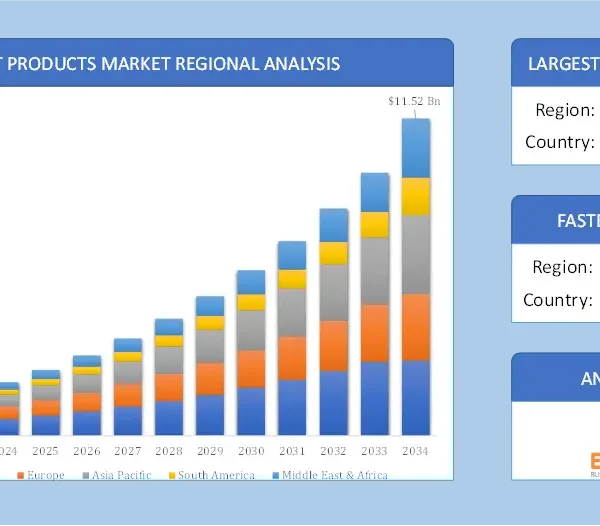The Carbonated Soft Drinks Market Size is expected to reach USD 412.33 Billion by 2033. The Carbonated Soft Drinks industry size accounted for USD 247.32 Billion in 2023 and is expected to expand at a compound annual growth rate (CAGR) of 4.97% from 2023 to 2033. Carbonated soft drinks, often abbreviated as CSDs, are non-alcoholic beverages that are infused with carbon dioxide gas to create carbonation, resulting in effervescence or fizz. They typically contain water, sugar or sweeteners, flavorings, and sometimes caffeine and other additives. Carbonated soft drinks come in various flavors and are widely consumed worldwide. They are commonly referred to as “sodas,” “pop,” or “fizzy drinks” in different regions and are sold in cans, bottles, or fountain dispensers. Popular examples of carbonated soft drinks include cola, lemon-lime, orange, root beer, and various fruit-flavored sodas.
Global Carbonated Soft Drinks Market Synopsis
The Carbonated Soft Drinks market underwent a profound and transformative shift due to the impact of the COVID-19 pandemic. With lockdowns, social distancing measures, and economic uncertainties, the out-of-home consumption of these beverages, primarily through restaurants, cinemas, and events, drastically declined. However, the pandemic also led to a surge in at-home consumption as people sought comfort and familiarity during stressful times. As a result, there was a shift in consumer preferences towards larger pack sizes and multi-packs to stock up at home. Additionally, health-conscious trends and concerns over sugar intake prompted some consumers to opt for low-sugar or diet variants. Manufacturers adapted their marketing strategies and product offerings to cater to changing consumer behaviors, emphasizing home consumption options and promoting healthier alternatives. Despite the challenges, the resilience of the Carbonated Soft Drinks market was evident as it navigated through the pandemic’s disruptions and found new avenues for growth.
Carbonated Soft Drinks Market Dynamics
The major factors that have impacted the growth of Carbonated Soft Drinks are as follows:
Drivers:
Ø Wide Consumer Appeal and Global Consumption
Carbonated soft drinks have a broad consumer base with widespread appeal, making them popular across various age groups and demographics. Their availability and affordability contribute to their global consumption, driving demand for these beverages in both developed and emerging markets.
Restraint:
- Health and Wellness Concerns
The Carbonated Soft Drinks market faces a restraint in the form of increasing health and wellness awareness among consumers. Concerns over excessive sugar, artificial sweeteners, and potential negative health effects have led some consumers to reduce their consumption of these beverages, opting for healthier alternatives like bottled water, flavored water, or natural juices.
Opportunity:
⮚ Innovation in Flavors and Formulations
The Carbonated Soft Drinks market presents an opportunity for innovation in flavors and formulations to cater to evolving consumer preferences. Companies can capitalize on the growing demand for natural and organic ingredients, as well as the rising interest in unique and exotic flavors, by introducing new and exciting beverage options to attract and retain customers. Additionally, developing low-sugar or sugar-free variants and exploring novel carbonation technologies can address health concerns and open up new market segments.
Carbonated Soft Drinks Segment Overview
By Type
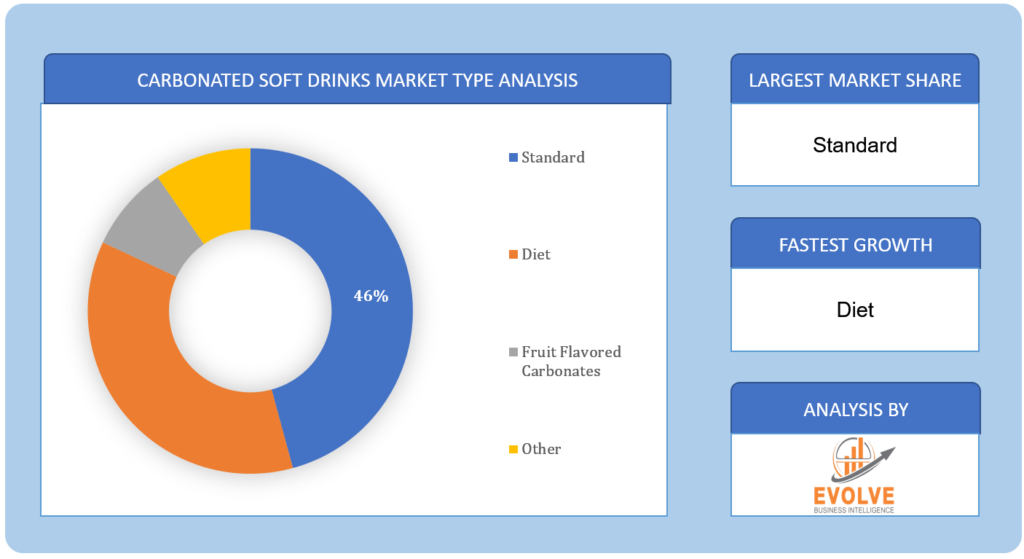 Based on Type, the market is segmented based on Standard, Diet, Fruit Flavored Carbonates, and Other. The Standard segment is projected to experience substantial growth during the forecast period in the Carbonated Soft Drinks market due to its wide consumer acceptance and popularity, offering a familiar and traditional range of flavors that appeal to a broad audience of consumers worldwide.
Based on Type, the market is segmented based on Standard, Diet, Fruit Flavored Carbonates, and Other. The Standard segment is projected to experience substantial growth during the forecast period in the Carbonated Soft Drinks market due to its wide consumer acceptance and popularity, offering a familiar and traditional range of flavors that appeal to a broad audience of consumers worldwide.
By Distribution Channel
Based on Distribution Channel, the market has been divided into Hypermarkets/Supermarkets, Specialty Stores, Convenience Stores, Online Stores, Other. Hypermarkets/Supermarkets stand as the dominant force in the Carbonated Soft Drinks Market, driving the significant market share due to their extensive shelf space, wide product selection, and ability to cater to consumer preferences for bulk purchases, making them the primary retail channels for carbonated soft drinks.
Global Carbonated Soft Drinks Market Regional Analysis
Based on region, the global Carbonated Soft Drinks market has been divided into North America, Europe, Asia-Pacific, the Middle East & Africa, and Latin America. North America is projected to dominate the use of the Carbonated Soft Drinks market followed by the Asia-Pacific and Europe regions.
 North America Market
North America Market
North America has historically held a dominant position in the Carbonated Soft Drinks (CSD) market, exhibiting a strong and sustained market presence. This dominance can be attributed to several factors, including a long-established culture of soft drink consumption, robust distribution networks, well-established brands, and a large consumer base. Furthermore, North American companies have successfully tapped into the region’s preferences for diverse flavors and innovative marketing strategies, enabling them to continuously adapt to changing consumer demands. The region’s well-developed infrastructure, coupled with a high degree of brand loyalty among consumers, has allowed North America to maintain its leadership position in the CSD market and remain a significant global player in the industry.
Asia-Pacific Market
The Asia-Pacific region has experienced remarkable growth in the Carbonated Soft Drinks (CSD) industry, emerging as a key and rapidly expanding market. The region’s burgeoning population, rising disposable incomes, and urbanization have led to an increased demand for convenience beverages, including carbonated soft drinks. As more consumers in countries like China, India, and Southeast Asian nations embrace Westernized lifestyles and adopt modern consumption patterns, the CSD market has seen significant expansion. Multinational beverage companies have been quick to capitalize on this trend by investing in production facilities, distribution networks, and tailored marketing strategies to cater to the diverse tastes and preferences of Asian consumers. Moreover, the proliferation of innovative flavors and formulations has further fueled the popularity of carbonated soft drinks in the region, making Asia-Pacific a crucial growth engine for the global CSD industry.
Competitive Landscape
The Global Carbonated Soft Drinks market is highly competitive, with numerous players offering a wide range of software solutions. The competitive landscape is characterized by the presence of established companies, as well as emerging startups and niche players. To increase their market position and attract a wide consumer base, the businesses are employing various strategies, such as product launches, and strategic alliances.
Prominent Players:
- ANADOLU GRUBU A.Åž.
- Danone
- JONES SODA CO
- Keurig Dr. Pepper Inc
- Monster Energy Company
- National Beverage Corp
- PepsiCo
- Refresco Group
- SUNTORY BEVERAGE & FOOD LIMITED
- The Coca-Cola Company
Key Development
In September 2022, Pepsico introduced a fresh offering to the market with the launch of an 18-week pack of zero-sugar Pepsi. The product debuted during the football season.
In April 2022, Coca-Cola entered the metaverse landscape by unveiling its innovative beverage, ‘Coca-Cola Zero Sugar Byte.’ This gaming-inspired product promises to bring the taste of pixels to reality, marking Coca-Cola’s first foray into the virtual world.
Scope of the Report
Global Carbonated Soft Drinks Market, by Type
- Standard
- Diet
- Fruit Flavored Carbonates
- Other
Global Carbonated Soft Drinks Market, by Distribution Channel
- Hypermarkets/Supermarkets
- Specialty Stores
- Convenience Stores
- Online Stores
- Other
Global Carbonated Soft Drinks Market, by Region
- North America
- US
- Canada
- Mexico
- Europe
- UK
- Germany
- France
- Italy
- Spain
- Benelux
- Nordic
- Rest of Europe
- Asia Pacific
- China
- Japan
- South Korea
- Indonesia
- Austalia
- Malaysia
- India
- Rest of Asia Pacific
- South America
- Brazil
- Argentina
- Rest of South America
- Middle East & Africa
- Saudi Arabia
- UAE
- Egypt
- South Africa
- Rest of Middle East & Africa
| Parameters | Indicators |
|---|---|
| Market Size | 2033: $412.33 Billion |
| CAGR | 4.97% CAGR (2023-2033) |
| Base year | 2022 |
| Forecast Period | 2023-2033 |
| Historical Data | 2021 |
| Report Coverage | Revenue Forecast, Competitive Landscape, Growth Factors, and Trends |
| Key Segmentations | Type, Distribution Channel |
| Geographies Covered | North America, Europe, Asia-Pacific, Latin America, Middle East, Africa |
| Key Vendors | ANADOLU GRUBU A.Åž., Danone, JONES SODA CO, Keurig Dr. Pepper Inc, Monster Energy Company, National Beverage Corp, PepsiCo, Refresco Group, SUNTORY BEVERAGE & FOOD LIMITED, The Coca-Cola Company |
| Key Market Opportunities | • Growing consumer awareness about health and wellness • Developing carbonated soft drinks with added functional benefits |
| Key Market Drivers | • Long-standing popularity and consumer preference • Easy accessibility and availability of products |
REPORT CONTENT BRIEF:
- High-level analysis of the current and future Carbonated Soft Drinks market trends and opportunities
- Detailed analysis of current market drivers, restraining factors, and opportunities in the future
- Carbonated Soft Drinks market historical market size for the year 2021, and forecast from 2023 to 2033
- Carbonated Soft Drinks market share analysis at each product level
- Competitor analysis with detailed insight into its product segment, Government & Defense strength, and strategies adopted.
- Identifies key strategies adopted including product launches and developments, mergers and acquisitions, joint ventures, collaborations, and partnerships as well as funding taken and investment done, among others.
- To identify and understand the various factors involved in the global Carbonated Soft Drinks market affected by the pandemic
- To provide a detailed insight into the major companies operating in the market. The profiling will include the Government & Defense health of the company’s past 2-3 years with segmental and regional revenue breakup, product offering, recent developments, SWOT analysis, and key strategies.



